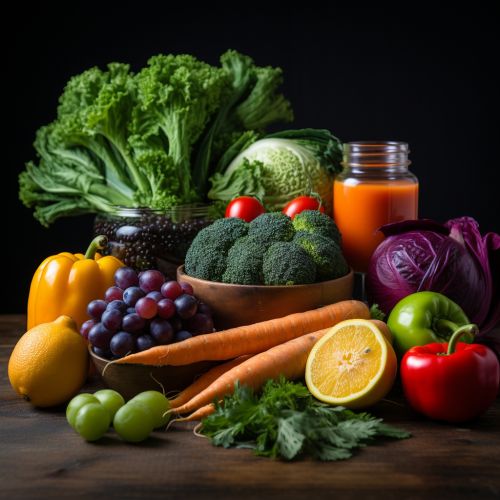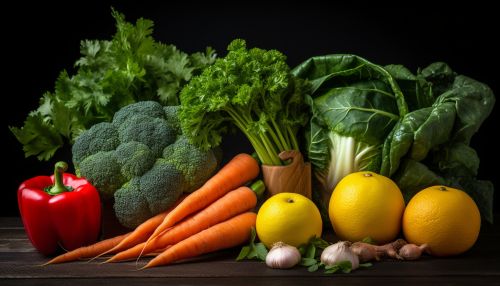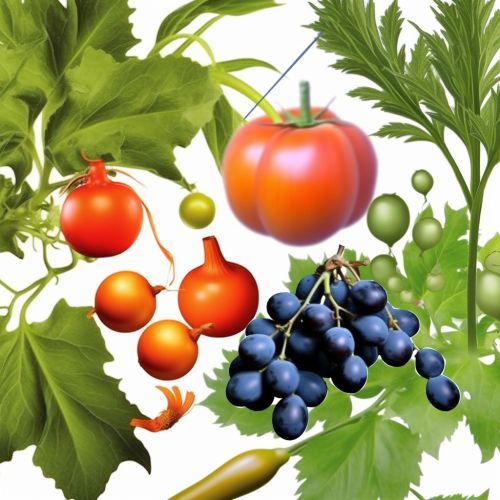Carotenoids
Overview
Carotenoids are a type of pigment found in nature, responsible for the vibrant colors seen in many fruits and vegetables. They are a class of phytonutrients – plant chemicals that are known for their health-promoting properties. Carotenoids belong to the category of tetraterpenoids, which are composed of eight isoprene units and have the molecular formula C40H56.


Classification
Carotenoids are classified into two main groups: carotenes and xanthophylls. Carotenes are purely hydrocarbon carotenoids, while xanthophylls contain oxygen. The main carotenes are alpha-carotene, beta-carotene, and lycopene. The primary xanthophylls are lutein, zeaxanthin, and astaxanthin.
Biosynthesis
Carotenoids are synthesized in the plastids of plants and some other photosynthetic organisms like algae, fungi, and bacteria. The biosynthesis of carotenoids involves the condensation of two molecules of geranylgeranyl pyrophosphate (GGPP) to form the 40-carbon precursor molecule, phytoene. This process is catalyzed by the enzyme phytoene synthase.


Function
Carotenoids perform several critical functions in plants and algae. They absorb light for photosynthesis and protect the chlorophyll from photo-damage. In non-photosynthetic organisms, carotenoids have different functions. For example, they serve as antioxidants and immune modulators in humans and animals.
Health Benefits
Carotenoids are potent antioxidants that can neutralize harmful free radicals in the body. They are known to enhance the immune system, protect the skin from sun damage, and prevent age-related macular degeneration. Some carotenoids, like beta-carotene, can be converted into vitamin A in the body, which is essential for vision, growth, and development.


Dietary Sources
Carotenoids are found in many fruits and vegetables, especially those that are red, orange, or yellow. Some of the best sources of carotenoids include carrots, tomatoes, spinach, kale, and bell peppers. They are also found in some types of fish and shellfish.
Absorption and Metabolism
Carotenoids are fat-soluble, which means they are best absorbed when consumed with fat. Once absorbed, they are transported to various tissues in the body where they are metabolized. The metabolism of carotenoids can be influenced by several factors, including the individual's nutritional status, the presence of disease, and the specific carotenoid in question.


Research and Future Directions
Research on carotenoids is ongoing, with scientists exploring their potential benefits in preventing chronic diseases like cancer and heart disease. Future research directions include understanding the mechanisms of carotenoid action, their role in health and disease, and their potential use in therapeutics.
